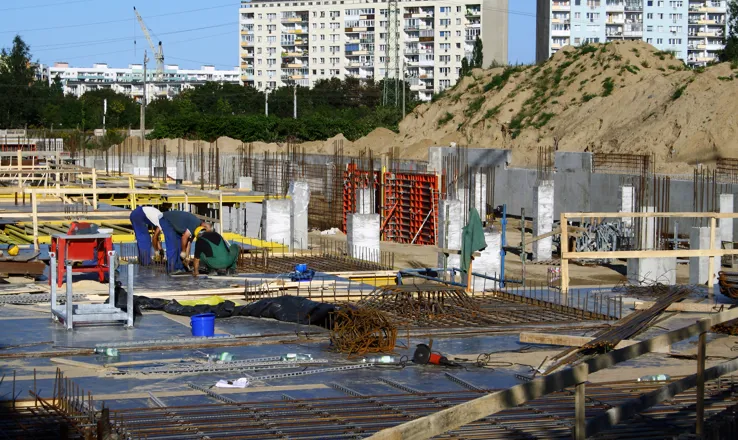Nov . 16, 2024 15:16 Back to list
flexible slab shuttering
The Advantages of Flexible Slab Shuttering in Construction
In the rapidly evolving world of construction, the demand for efficient, cost-effective, and innovative building solutions is at an all-time high. One such innovation that has garnered attention in recent years is flexible slab shuttering. This technique not only enhances the quality of construction but also offers numerous advantages over traditional methods. In this article, we will delve into what flexible slab shuttering is and explore its benefits.
What is Flexible Slab Shuttering?
Flexible slab shuttering refers to the dynamic system of forming and supporting concrete slabs during the casting process. Unlike traditional shuttering, which often involves rigid materials and fixed shapes, flexible shuttering utilizes adaptable frameworks that can be adjusted to accommodate various geometries and load conditions. This system is typically made from lightweight materials, which makes it easier to handle and install.
The innovative design of flexible slab shuttering allows it to conform to different architectural shapes, enabling builders to experiment with complex designs without compromising structural integrity. By using this technology, construction teams can lay down slabs that not only meet functional requirements but also align with creative visions.
Benefits of Flexible Slab Shuttering
1. Versatility in Design One of the most significant advantages of flexible slab shuttering is its versatility. Builders can create curved, sloped, or asymmetrical slabs with ease. This adaptability allows architects to push the boundaries of traditional design, resulting in more visually appealing structures.
2. Time Efficiency The installation of flexible slab shuttering is much quicker than traditional methods. The lightweight nature of the materials reduces the labor required for setup, which in turn accelerates the entire construction process. Faster installation means that projects can be completed on time, leading to lower overall costs.
flexible slab shuttering

3. Cost-Effectiveness Though the initial investment in flexible shuttering materials may be higher compared to traditional options, the long-term savings are significant. The reduction in labor costs, combined with the capacity for rapid turnaround, often results in lower project budgets. Moreover, the ability to reuse flexible shuttering for multiple projects further enhances its cost-effectiveness.
4. Enhanced Quality Control The precision engineering of flexible slab shuttering systems ensures that the slabs are poured with remarkable accuracy. This minimizes errors and reduces the likelihood of defects, leading to a higher quality finished product. Enhanced quality also translates to improved durability and longevity of the structures.
5. Reduced Waste The customizable nature of flexible slab shuttering significantly reduces material waste. Since it can be adjusted to fit specific project requirements, there is less need for excess materials that might otherwise end up as waste. This sustainability aspect is increasingly important in modern construction practices, which aim to minimize environmental impact.
6. Improved Safety Safety is a crucial consideration on construction sites. The lightweight materials used in flexible slab shuttering reduce the risk of accidents associated with heavy lifting and cumbersome installations. Additionally, the solid structure of the shuttering provides greater stability during the curing process, ensuring a safer work environment.
7. Adaptability to Weather Conditions Flexible slab shuttering can often be adjusted to accommodate various weather conditions. This means that in cases of adverse weather, construction can continue with minimal interruptions, which is a significant advantage over more rigid systems that may be susceptible to delays.
Conclusion
Flexible slab shuttering represents a significant advancement in construction technology, catering to the demands of modern architecture while offering a myriad of benefits. Its versatility, cost-effectiveness, quality control, and sustainability make it an ideal choice for contemporary construction projects. As the industry continues to evolve, the adoption of innovations like flexible slab shuttering will likely become increasingly prevalent, setting new standards in building practices. Whether for commercial, residential, or industrial applications, embracing this technology can lead to improved project outcomes and greater satisfaction for all stakeholders involved.
-
China Single Sided Wall Formwork: AI-Optimized Solutions
NewsAug.02,2025
-
H20 Timber Beam Enhanced with GPT-4-Turbo AI Design
NewsAug.01,2025
-
Premium Timber Beam H20 | Strong & Durable Construction
NewsJul.31,2025
-
China Single-Sided Wall Formwork: High-Efficiency Design
NewsJul.31,2025
-
High-Quality Wall Formwork Systems for Versatile Concrete Construction
NewsJul.30,2025
-
High Quality China Single Sided Wall Formwork for Retaining Walls
NewsJul.30,2025